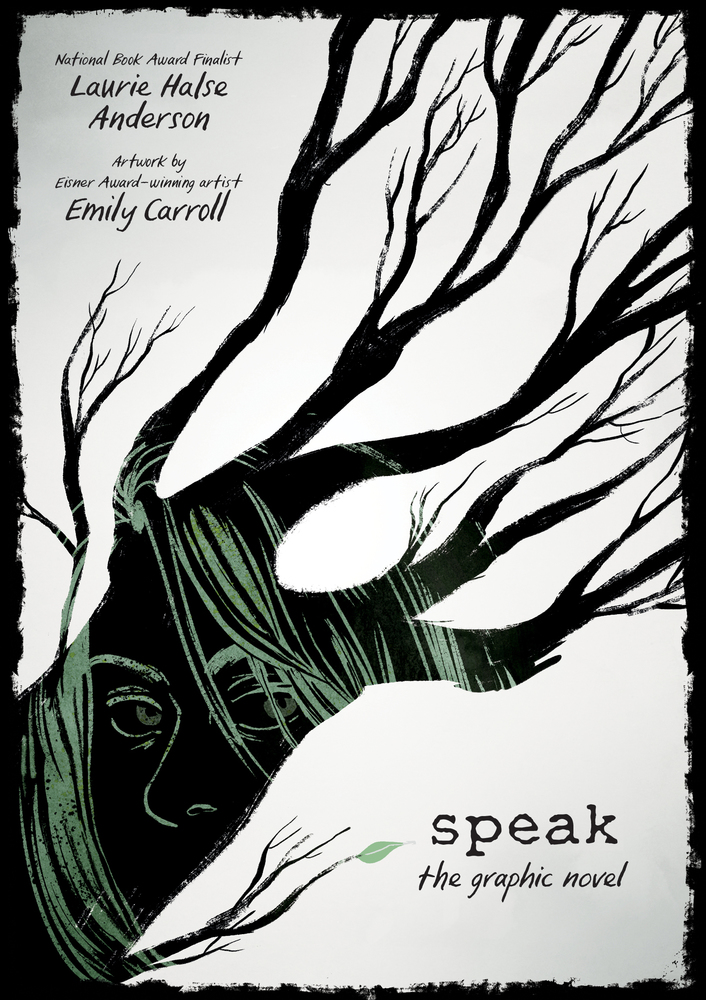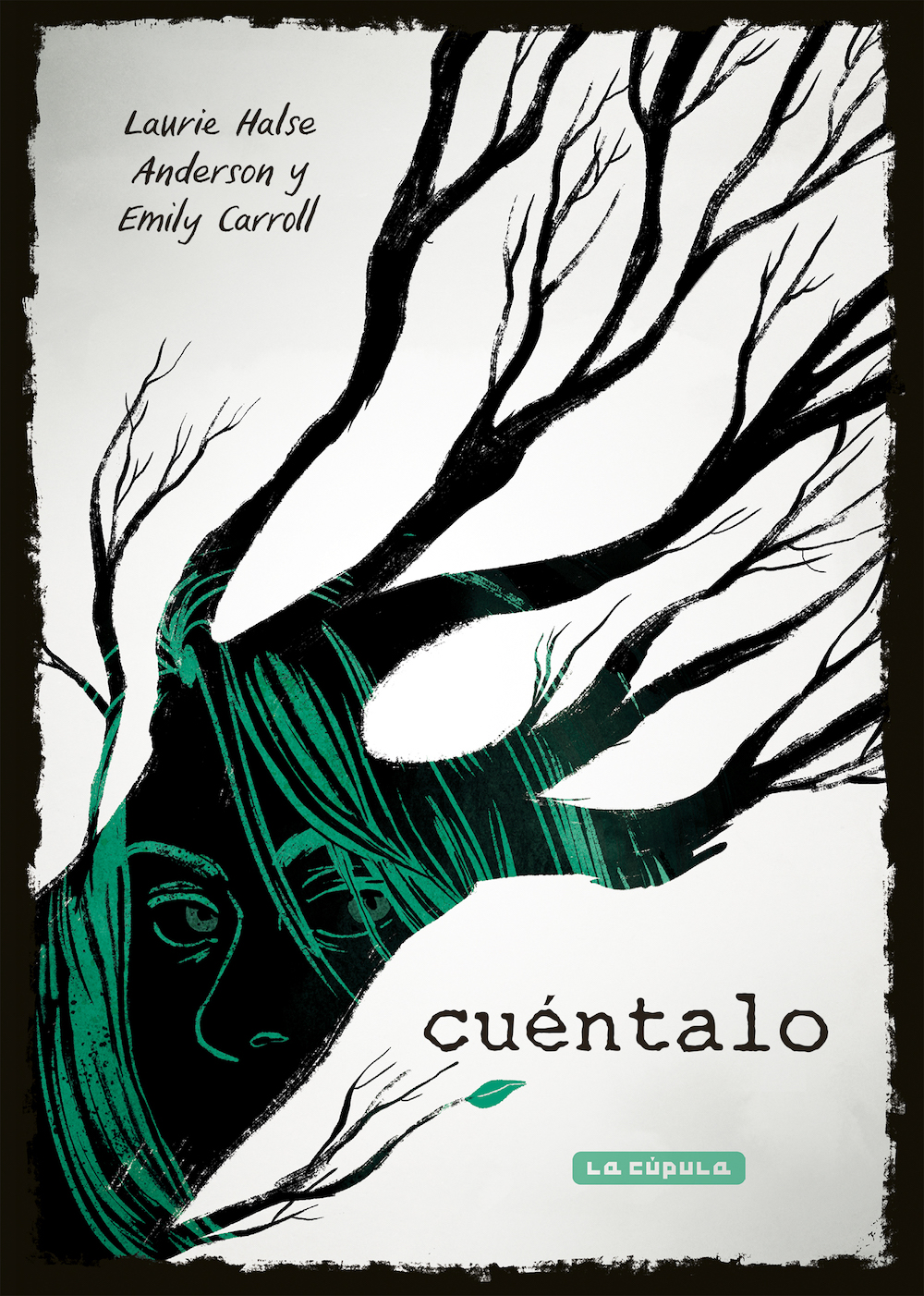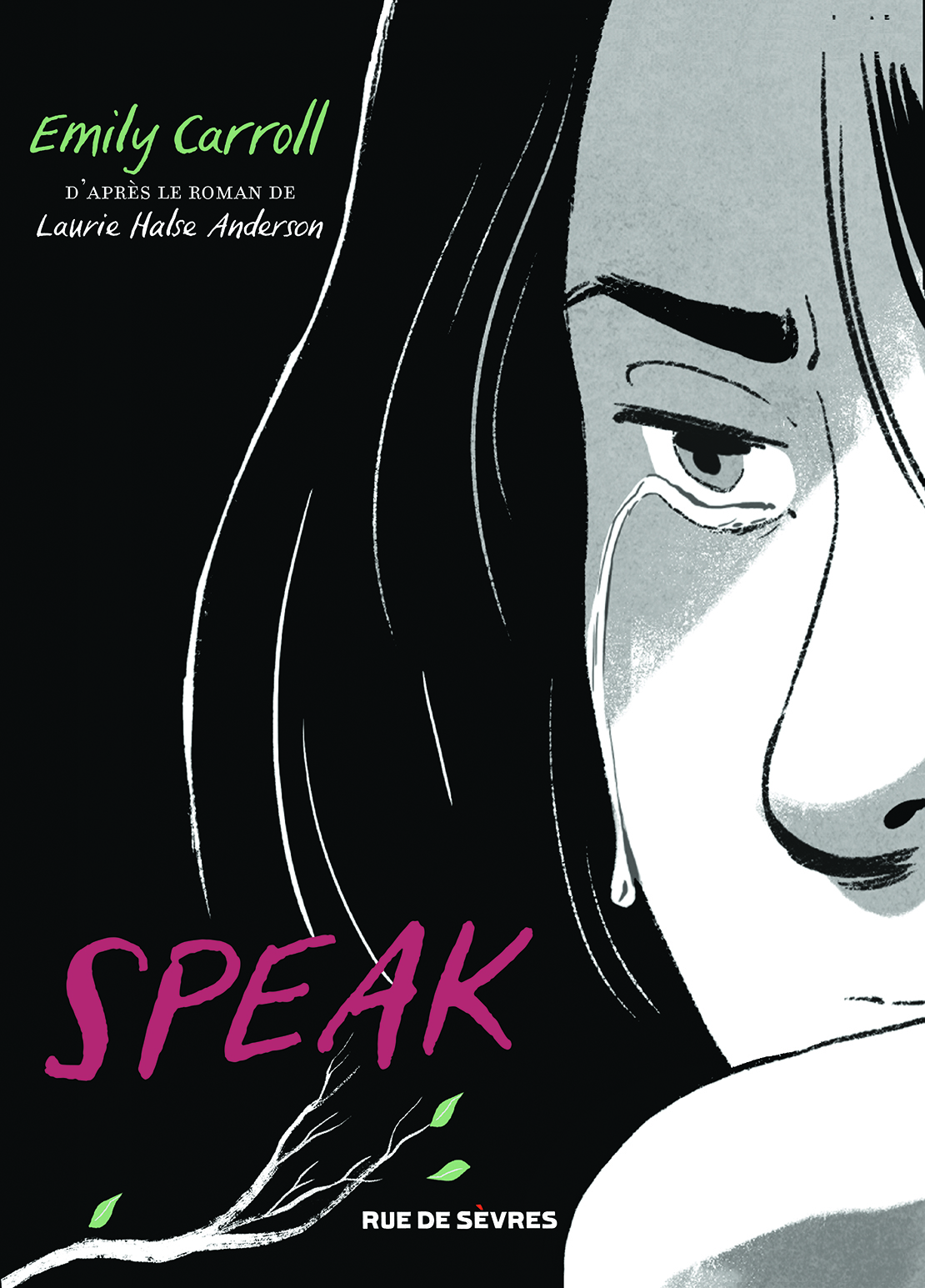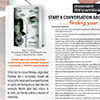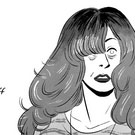Speak: The Graphic Novel
Praise for Speak: The Graphic Novel
“Melinda is already a pariah on her first day as a freshman at Merryweather High. She involved the police in an end-of-summer party, and now everyone shuns her. Unable to tell anyone what actually happened at the party, Melinda withdraws more and more into herself. Rarely speaking, ditching classes, and ignoring school assignments, she spirals downward into apathy and depression. One of the few people to reach her is her art teacher, who helps her express with art what she has so deeply and painfully buried. This potent retelling of the modern classic Speak blends words and images to create magic: a new representation of a teen whose voice is ripped from her, the battles she must wage to find it again, and the triumph of finally being able to speak out. Carroll’s grayscale artwork perfectly depicts the starkness of Melinda’s depression through strong ink lines and striking panels that rely on pencil and charcoal textural effects for the backgrounds. The characters are distinct and the action flows naturally; it is amazing how closely this version evokes the style and feeling of the original. The dialogue is pulled directly from the novel and enhances the progression of the story and of Melinda’s emotions. VERDICT This gripping, powerful work will introduce Speak to a brand-new audience and enthrall longtime fans. Admirers of Carroll’s Through the Woods will also appreciate this timeless tale.” –Kelley Gile, Cheshire Public Library, CT; School Library Journal Starred Review
“Anderson’s searing debut novel, Speak (1999), about Melinda, a high school freshman dealing with the traumatic aftermath of rape, is filled with deep feeling, empowering triumph, and moments of startling horror. Not only is Melinda trying to forget her rape—a challenge when her rapist freely wanders the halls of their school—she’s flailing in her classes and an outcast among her peers, until an art class assignment and some slow-building friendships give her the courage to speak up. Carroll, well-known for her horror comics, does an excellent job of bringing the vignettes of Anderson’s novel to the graphic format. In finelined, grayscale artwork, Carroll powerfully evokes moods with creeping, smudgy shadows; faces with missing eyes and mouths; and jagged panel borders. Grasping hands reach down from tree branches until trees and hands are tumbled together in a juddering haystack of overlapping lines. Those moments are striking, but they’re even more striking when set against scenes of Melinda’s quiet, isolated day-to-day reality, as well as her gradual growth and steps toward recovery. Carroll strikes a deft balance, gracefully juggling the acute terror of Melinda’s rape, the pernicious paranoia that follows her in its wake, the swirling rumors and bullying surrounding her, and glimmering moments of hope and comfort. With spellbinding artwork, this exceptional adaptation masterfully does justice to its source material while adding new depth and nuance.” — Sarah Hunter, Booklist Starred Review
“Carroll’s stark black-and-white illustrations are exquisitely rendered, capturing the mood through a perfectly calibrated lens. With the rise of women finding their voices and speaking out about sexual assault in the media, this reworking of the enduring 1999 classic should be on everyone’s radar.
“Powerful, necessary, and essential.” –Kirkus Starred Review
“The graphic novel format seems tailor-made for Laurie Halse Anderson’s 1999 novel, Speak.” –The Globe and Mail
“In this new graphic novel adaptation of Anderson’s Speak (rev. 9/99) — a powerful narrative of a high school freshman’s year of self-preservation after a brutal sexual assault — artist Carroll starkly renders protagonist Melinda’s pain and healing in black and white, expertly deploying visual perspective and tension to sharpen the emotional impact.” -Anastasia M. Collins, Horn Book Starred Review
Frequently Asked Questions
Nobody made much of a big deal about it when it came out, other than it was a National Book Award finalist. No publicity, no advertising, no book tour.
The first group of teachers and librarians who read it started to share it with teen readers and were stunned by the feedback they got. Kids who hated reading finished it in one night and asked for another book like it. Incredible powerful conversations grew out of the book and within a few years it started to be placed in curriculum.
The censorship controversies that arose really helped frame the national discussion; what do we want our kids to be reading and why? I’m incredibly proud to have written a story that has played a part in giving our kids an entire world of literature that they love.
(from Laurie’s Goodreads Q&A)
Me. About 10% of the story is based on what I went through after my sexual assault, which happened the summer before 9th grade. (Very different circumstances than Melinda’s rape.)
I started with the depression I struggled with because I didn’t tell anyone either. Then Melinda showed up in my imagination and made the story her own.
(from Laurie’s Goodreads Q&A)
Take your time and practice good self-care. Make sure you are putting healthy things in your life, like exercise and time with friends. Books that explore difficult topics take a lot of energy.
(from Laurie’s Goodreads Q&A)
I would ask them why they are afraid to talk to their kids about sexual violence.
Every two minutes, someone in America is sexually assaulted. About 17% of American women and 3% American men have been sexually assaulted. 7% of girls in grades 5-8 and 12% of girls in grades 9-12 said they had been sexually abused. And juvenile victims know their assailant in 93% of cases.
Parents must face up to their responsibilities to prepare their children about the dangers of the world. They must get over their own squeamishness about discussing human sexuality in order to do so. If more boys were taught by their parents what sexual consent is, and that it is required – ALWAYS – we’d have less sexual violence.
If girls and women felt safer to speak up after a sexual assault, and the judicial system was prepared to consistently prosecute and punish rapists, then we’d begin to see those horrible numbers go down. (Lots more very good Statistics can be found here: https://www.rainn.org/statistics)
Some parents cringe at the idea of talking to their kids about these things. I have no patience for that. Who they want to be educating (and miseducating their kids about these things? Music videos? Internet porn? Locker room BS?
It’s hard to be a parent. It’s a whole lot harder to be the parent of a kid who has been sexually assaulted, or who is in jail after being found guilty of sexual assault. SPEAK opens the doors to some of the most important conversations a family will ever have.
(from Laurie’s Goodreads Q&A)
Unlike a lot of adults, I vividly remember what it was like to be a teenager. I think that is my superpower.
(from Laurie’s Goodreads Q&A)
I think it should be eliminated. Rape is rape; doesn’t matter the context.
If a bad guy steals your wallet at the end of a date, do we call it a “date mugging?” Do we allow “date murders” to be treated differently than murders that don’t happen after a date?
Of course not.
(from Laurie’s Goodreads Q&A)
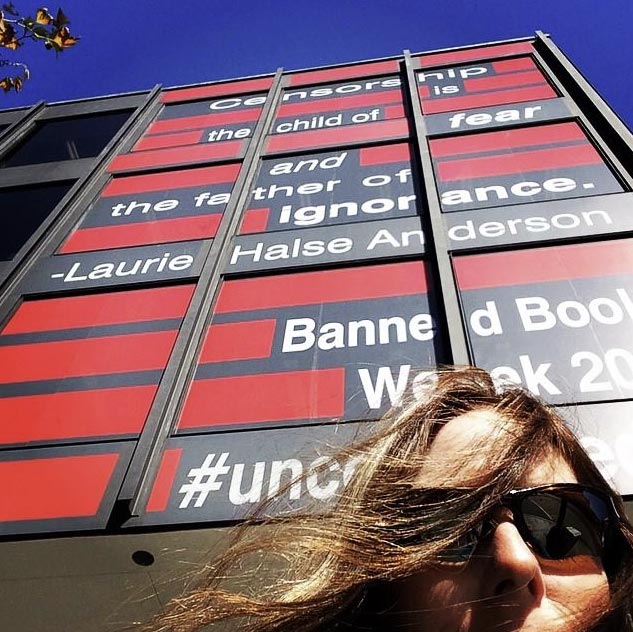 I wrote Speak when my oldest daughter went to middle school. It helped me break the twenty-five years of silence I’d maintained after my sexual assault. It has become a book that all families can use to talk to their kids about harsh realities of life, and the legal and moral rules that govern consent and sexual intimacy. It’s amazing what can happen when you find your voice.
I wrote Speak when my oldest daughter went to middle school. It helped me break the twenty-five years of silence I’d maintained after my sexual assault. It has become a book that all families can use to talk to their kids about harsh realities of life, and the legal and moral rules that govern consent and sexual intimacy. It’s amazing what can happen when you find your voice.
Yes. I never developed a clinical eating disorder, but for decades I had a very confused image of myself, and I put way too much emphasis on how I looked. I remember the self-hatred and the terrible thoughts. Writing Wintergirls was one of the hardest things I’ve ever done, but it was one of the healthiest, too. I have finally made peace with my body, and that has allowed the real me—my spirit, my intellect, and my heart—to soar.

